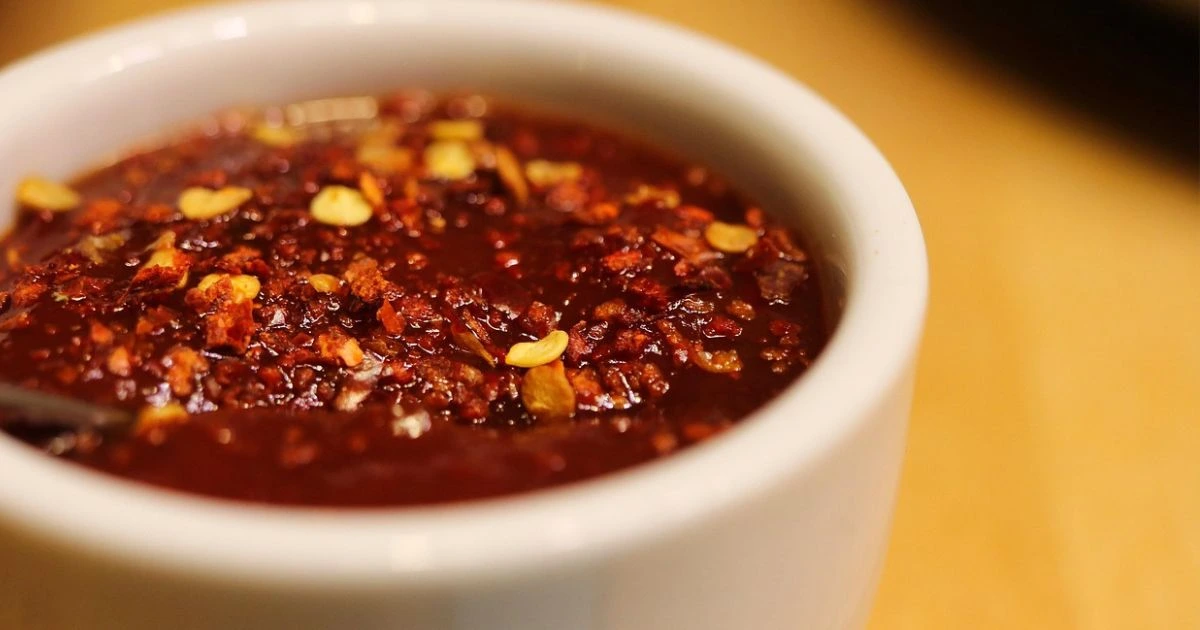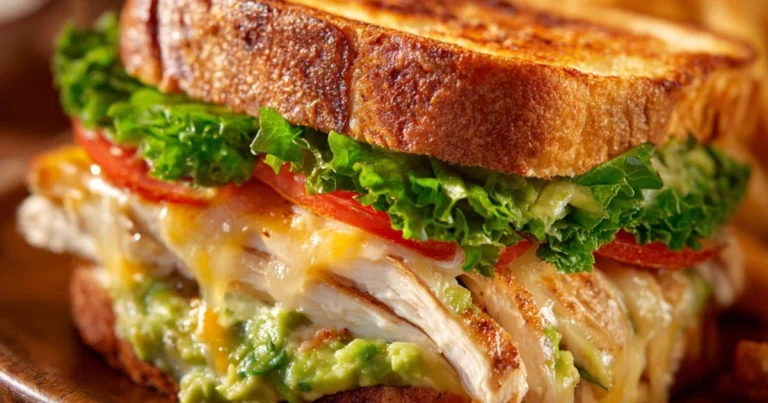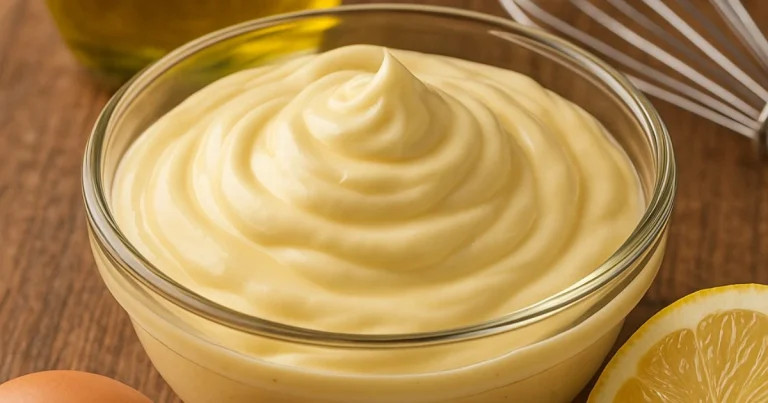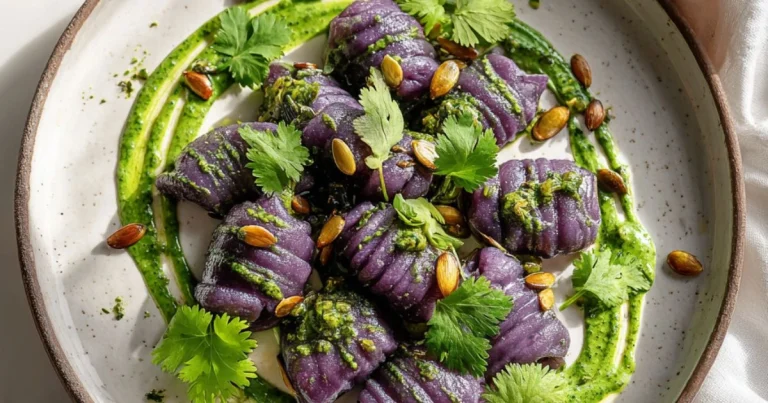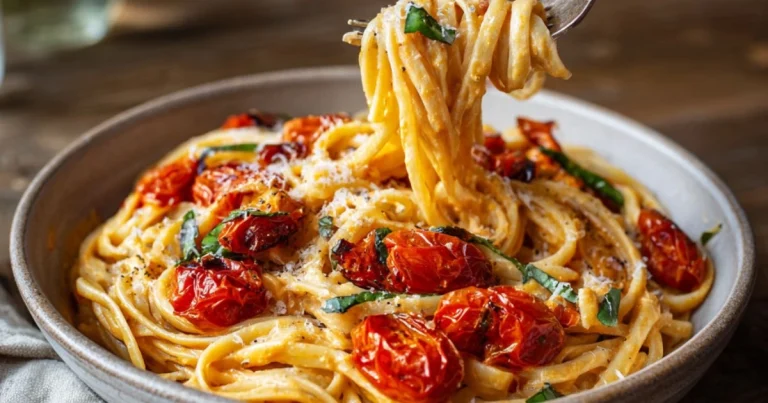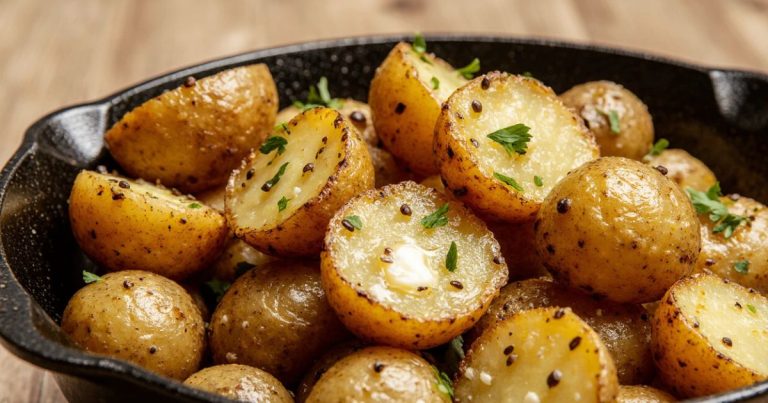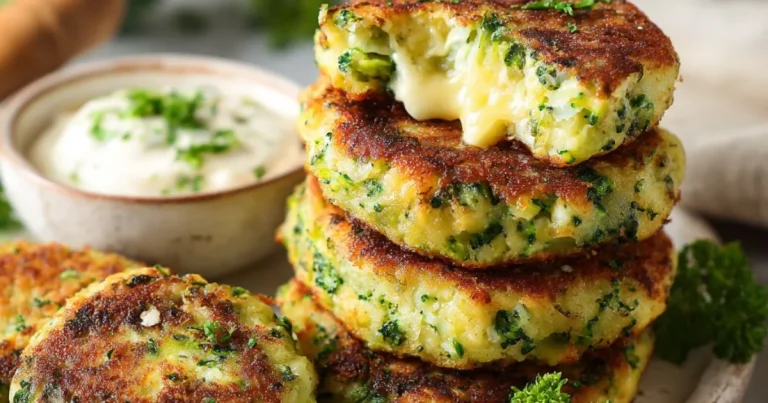Homemade Salsa Macha
Homemade salsa macha is a true treasure of Mexican cuisine. Packed with flavor, boasting a bold spiciness, and incredibly versatile, this recipe—originating from Veracruz and Oaxaca—has made its way onto tables both in Mexico and around the world. Made with dried chiles, vegetable oils, and nuts, this salsa is ideal for everything from tacos to gourmet dishes.
But salsa macha isn’t only remarkable for its flavor: its history and nutritional value also make it special. What’s more, preparing it is much easier than you might think.
Origin and History of Salsa Macha
Salsa macha has its roots in the Gulf and southern regions of Mexico, especially in Veracruz and Oaxaca. Its name “macha” refers to its strong flavor and intense character—traits that also reflect the culinary culture from which it comes.
This condiment has been passed down for generations in Mexican families, becoming an essential companion to antojitos (snacks) and traditional dishes. Today, it’s transformed into modern, vegan, gourmet, or milder versions—without losing its original essence.
If you’d like to learn more about the symbolism and evolution of ingredients like chile in Mexican cooking, check out this INAH resource on the cultural origins of chile in Mexico.
What Makes Salsa Macha Special?
Homemade salsa macha stands out not only for its flavor but also for its long shelf life and its deep umami taste. Oil, one of its essential components, acts as a natural preservative and helps intensify the flavor.
Additionally, using healthy oils like olive or peanut oil can provide extra benefits. For example, the Spanish Heart Foundation explains how to choose the best oil for your salsa.
Classic Ingredients to Make Homemade Salsa Macha
Homemade salsa macha is known for its simplicity, versatility, and explosive flavor. Its main ingredients are easy to find at any Mexican market or specialty store. Below, we break down each key component so you can master the traditional recipe—or create your own variations.
Dried Chiles
The soul of the salsa. Commonly used:
- Dried chile de árbol: Very spicy and bold in flavor.
- Guajillo chile: Adds a reddish color and balanced sweetness.
- Pasilla or morita chile: For a smoky touch.
You can combine these chiles based on your spice tolerance. Removing the seeds helps reduce the heat level.
Oil
The oil carries flavor and acts as a natural preservative. Common choices include:
- Olive oil: For a more gourmet version.
- Peanut oil: Traditional and highly aromatic.
- Sesame oil: Adds a toasted, distinctive flavor.
The secret is to fry ingredients over low heat to avoid burning them.
Nuts
One of the most distinctive features of salsa macha, they add texture and body:
- Toasted peanuts (unsalted and shelled).
- Almonds, walnuts, or sesame seeds (optional).
Other Ingredients
- Garlic: Adds depth and mild spice.
- Salt: Enhances all the flavors.
- Optional spices: Dried oregano, cumin, or black pepper.
The magic of homemade salsa macha lies in the quality of the ingredients and the balance of heat, fat, and crunch.
Step-by-Step Recipe for Homemade Salsa Macha
Making salsa macha at home is not only easy—it’s a fragrant and intense culinary experience. Below is the traditional method, perfect for enhancing all types of dishes.
Ingredients:
- 10 dried chile de árbol
- 4 guajillo chiles, seeded
- 4 garlic cloves, peeled
- 1/2 cup unsalted, toasted peanuts
- 1/2 cup olive oil (or peanut oil)
- Salt to taste
Instructions:
- Heat the oil in a skillet over low heat. It’s important that the oil doesn’t smoke or boil, as it could burn the chiles and make them taste bitter.
- Fry the garlic and dried chiles carefully. Add the garlic first, then the chiles in batches, stirring constantly. Remove them when they puff slightly and change color. Set aside the oil.
- Let the ingredients cool for a few minutes before blending.
- Blend the chiles, garlic, peanuts, a pinch of salt, and the reserved oil. Use a blender or food processor. The consistency can be smooth or chunky, depending on your preference.
- Return the mixture to the skillet and sauté for 2–3 minutes over low heat. This enhances the flavors and seals the salsa.
- Cool and store in a sterilized glass jar. Cover with an extra layer of oil to prolong its shelf life.
Popular Variations of Salsa Macha
One of the most appealing features of homemade salsa macha is its adaptability. While the traditional recipe is delicious on its own, there are many versions that adjust the spiciness, texture, or flavor to suit regional or personal preferences. Here are the most popular variations:
Salsa Macha with Sesame Seeds
This variation includes toasted sesame seeds, which add a nutty flavor and a crunchy texture. It’s typical of southern Mexico and ideal for those who prefer a lighter salsa.
Salsa Macha with Almonds or Walnuts
Perfect for achieving a creamier texture and more delicate taste. Almonds or cashews replace or complement peanuts and are excellent for pairing with grilled meats or fresh cheeses.
Salsa Macha with Chipotle or Morita Chiles
If you enjoy smoky flavors, this version uses dried chipotle or morita chiles. It pairs wonderfully with dishes like birria de res or barbacoa tacos.
Sweet Salsa Macha with Dried Fruits
This variation offers a sweet and spicy balance—perfect for serving with dishes like shrimp in mango-chipotle sauce.
Extra-Garlic (Vampire Style) Salsa Macha
For garlic lovers, this version uses a generous amount of fried garlic, resulting in a bold, deeply spiced flavor.
These variations allow salsa macha to suit any taste and occasion—without ever losing its authentic Mexican essence.
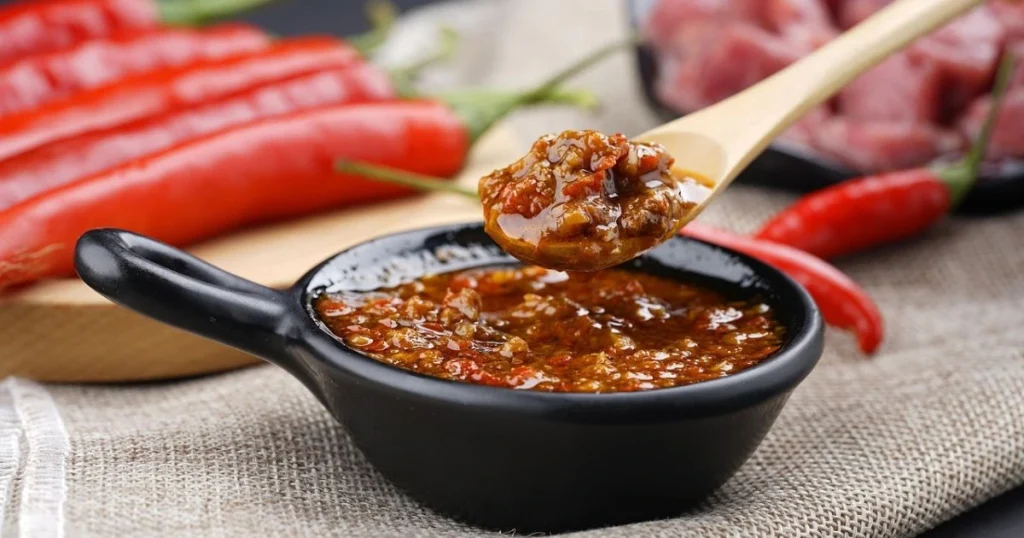
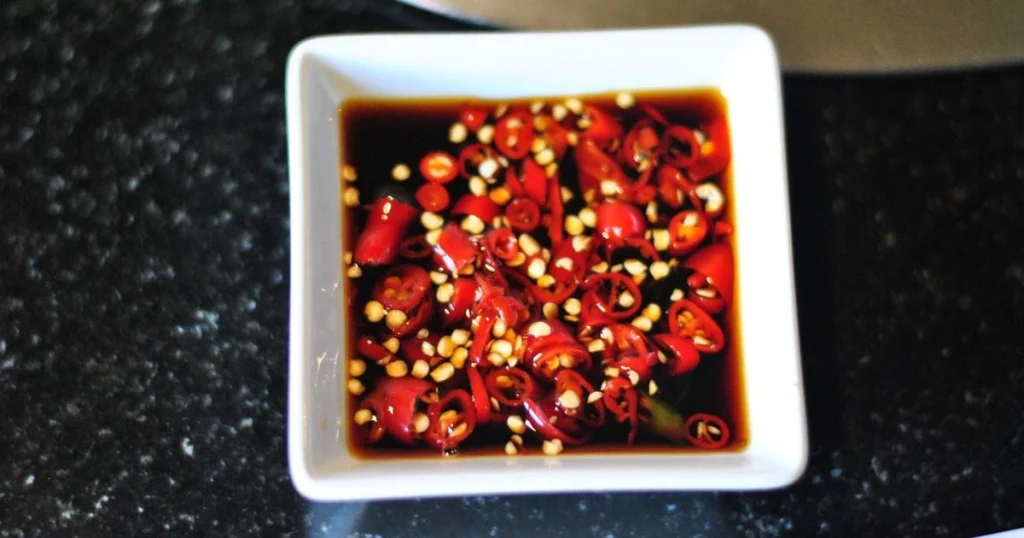
Uses of Salsa Macha in the Kitchen
Homemade salsa macha is much more than just a side condiment—it’s a flavor enhancer that transforms any dish into a bold and delicious culinary experience. Its versatility allows it to be used in traditional, modern, or even gourmet recipes.
Tacos and Mexican Street Food
A classic use. Add a spoonful of salsa macha to your carne asada, chicken, barbacoa, or carnitas tacos. It’s also ideal on sopes, quesadillas, and tlacoyos.
Seafood and Fish
The combination of salsa macha’s heat with the delicacy of seafood is unbeatable. It’s perfect for accompanying ceviches, seafood cocktails, or dishes like this healthy shrimp soup. It also elevates the flavor of garlic shrimp or grilled octopus.
Grilled or Roasted Meats
Use it as a finishing sauce over grilled meats, ribs, or even a juicy birria de res. It adds intensity without overpowering the main flavors.
Salads and Bowls
Just a teaspoon in a vinaigrette can boost any salad. Try mixing it with lemon juice and oil to season rice, quinoa, or vegetable bowls.
Snacks and Dips
Serve salsa macha as a dip with artisan bread, totopos, or even as a side for empanadas made with this baked empanada dough.
Tip: Start with small amounts—its flavor and heat are intense. Pair it with sweet, fresh, or creamy ingredients to balance the intensity.
Nutritional Benefits
Beyond flavor, this salsa offers some healthy properties:
- Dried chiles: Rich in antioxidants and capsaicin, which has anti-inflammatory effects.
- Olive or peanut oil: Healthy fats that support cardiovascular health.
- Peanuts: A source of plant-based protein, fiber, and essential minerals.
Healthline outlines the nutritional benefits of peanuts—great for those seeking energy-rich and healthy options.
Storing and Packaging Salsa Macha
To properly store your homemade salsa macha, follow these guidelines:
- Sterilize the jar you’ll use for storage.
- Store in a cool, dark place—or refrigerate.
- Shelf life: Up to 2 months if well-sealed and covered with oil.
Tip: Always use a clean spoon to prevent contamination.
Frequently Asked Questions (FAQ)
What’s in salsa macha?
Dried chiles, oil, garlic, salt, and nuts like peanuts or almonds.
How long does homemade salsa macha last?
Roughly 1–2 months when refrigerated and tightly sealed.
Can I make it without olive oil?
Yes, you can use peanut oil, corn oil, or sesame oil.
How do I reduce the heat?
Remove chile seeds and blend with mild nuts like almonds.
Is salsa macha the same as chile de árbol salsa?
No. While both use dried chiles, salsa macha includes oil and nuts as key ingredients.
How do I know if it’s gone bad?
If the color changes, it smells rancid, or mold appears—discard it.
Conclusion
Homemade salsa macha is more than just a spicy sauce—it’s a tradition, a perfect companion, and a true flavor booster. Best of all, you can customize it to your liking and share it with family or friends.
So don’t hesitate—try your own version, experiment with ingredients, and keep this authentic taste of Mexico alive in your kitchen.
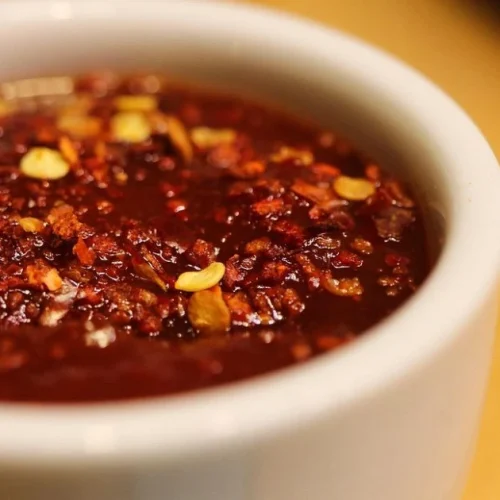
Homemade Salsa Macha
Ingredients
- 10 dried chile de árbol
- 4 guajillo chiles (seeded)
- 4 garlic cloves (peeled)
- ½ cup unsalted roasted peanuts
- ½ cup olive oil (or peanut oil)
- Salt to taste
Instructions
- Heat oil in a skillet over low heat.
- Fry garlic and dried chiles until lightly puffed and fragrant. Remove and reserve the oil.
- Let cool, then blend chiles, garlic, peanuts, salt, and reserved oil to desired consistency.
- Return to pan and sauté for 2–3 minutes over low heat.
- Cool and store in a sterilized jar with a layer of oil on top.

